VFX Meaning : Every thing you want to know about
VFX stands for Visual effects. It is the process of creating imaginary scenes outside the real world’s natural shots. This is widely used in animation and film making. Let’s explore VFX meaning : Every thing you want to know about by The Smart Innovator.
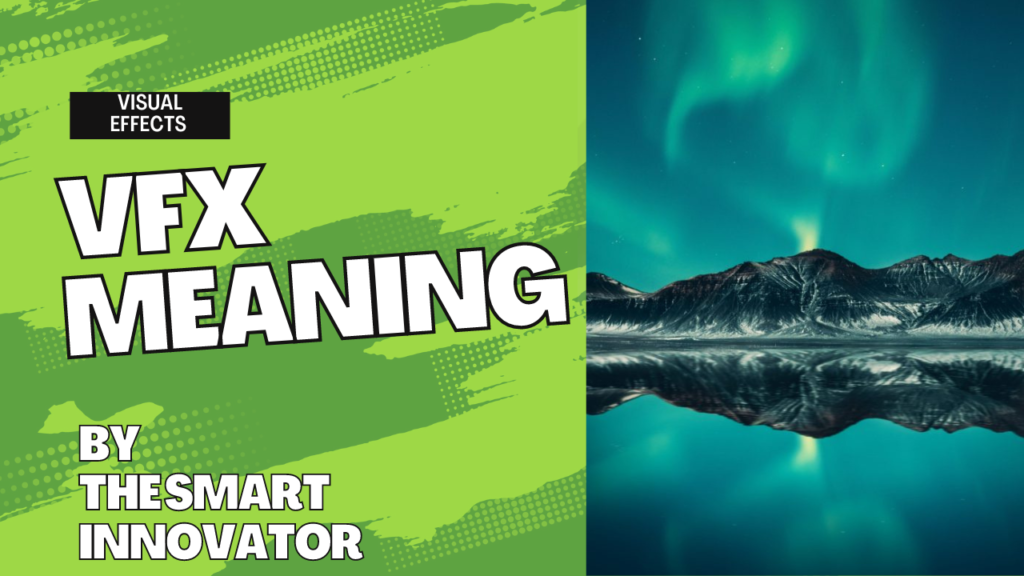
What is VFX?
VFX full form is Visual effects. Now in the current filming and animation industry more Visual experience is needed to produce quality content. VFX gives us immersive experience for the videos and film that in general needed sophisticated setup to produce.
VFX encompasses a broad range of techniques, including computer-generated imagery (CGI), motion capture, green screen compositing, matte painting, 3D modeling and animation, particle effects, and more.
These techniques are used to create realistic or fantastical environments, characters, objects, and visual phenomena that would be challenging or impossible to achieve in reality.
Types of Visual effects (VFX)
Visual effects (VFX) encompass a wide range of techniques used to create and enhance visuals in films, TV shows, commercials, video games, and more. Here are some common types of visual effects:
1. CGI (Computer-Generated Imagery): CGI involves creating entirely digital elements, such as characters, creatures, environments, and objects, using computer-generated graphics. This technique is widely used for creating realistic or fantastical visuals that may be impractical or impossible to film in real life.
2. Compositing: Compositing refers to the process of combining multiple visual elements, such as live-action footage, CGI, matte paintings, and effects layers, to create a seamless final image. It involves adjusting colors, lighting, and shadows to ensure that all elements blend together realistically.
3. Matte Painting: Matte painting involves creating highly detailed, painted backgrounds or environments that are used as extensions to the physical sets or as complete replacements. This technique allows for the creation of expansive, realistic, or imaginary landscapes.
4. Motion Capture: Motion capture, also known as mocap, is the process of recording and tracking the movements of actors or objects to create realistic animation or visual effects. Sensors or markers are placed on the performer, capturing their movements and translating them into digital animation.
5. Practical Effects: Practical effects involve physical elements and techniques used on set to create visual illusions. This can include animatronics, puppetry, miniatures, prosthetics, pyrotechnics, and other physical props or techniques that are captured directly in-camera.
6. Simulation Effects: Simulation effects are used to create natural phenomena or dynamic elements that require realistic physics, such as fire, smoke, water, explosions, cloth simulations, fluid dynamics, and particle effects.
7. Digital Makeup: Digital makeup involves digitally altering or enhancing an actor’s appearance, including changing their facial features, adding or removing makeup effects, or aging and de-aging effects.
8. 3D Modeling and Animation: 3D modeling and animation techniques are used to create and manipulate digital objects, characters, and environments. This includes character modeling, rigging, animation, and texturing to bring life to virtual elements.
9. Chroma Keying (Green Screen): Chroma keying involves shooting actors or objects against a uniformly colored background, typically green or blue, and then replacing that background with different images or footage during post-production.
10. Time Manipulation Effects: Time manipulation effects involve altering the perception of time within a scene, such as slow-motion or time-lapse sequences, freeze frames, or time-remapping techniques.
These are just a few examples of the many types of visual effects used in the industry. Visual effects artists employ these techniques and more to create stunning visuals that enhance storytelling, create immersive worlds, and bring imaginative concepts to life on the screen.
VFX in movie
VFX in the movie is the scene that an actor performs in support of real life scenes. Not every scene needed VFX. But visual effects are very common to put special things in a particular scene.
VFX, or Visual Effects, has had a significant impact on the world of movies. It has revolutionized the way stories are told on screen, allowing filmmakers to create stunning visual spectacles, realistic environments, and otherworldly creatures that captivate audiences.
VFX has become an integral part of modern filmmaking, enabling directors to bring their imaginative visions to life and transport viewers to extraordinary realms.
One of the primary applications of VFX in movies is the creation of realistic or fantastical environments. With the help of computer-generated imagery (CGI), VFX artists can build entire worlds from scratch or enhance existing locations.
They can transform ordinary landscapes into breathtaking vistas, simulate futuristic cityscapes, or recreate historical settings with incredible accuracy. This ability to transport audiences to different times, places, or even dimensions adds a layer of immersion and visual impact to the storytelling.
Furthermore, VFX is used for practical purposes in movies. It can be employed to remove unwanted objects or people from a scene, correct continuity errors, or enhance the visual quality of footage.
Additionally, VFX is often utilized in post-production processes such as color grading and compositing, ensuring a consistent and visually appealing final product.
VFX of Bahubali
Makuta Inc. did the VFX for Bahubali movie. It is Hyderabad based VFX company headquarters in Santa Clara California.
Where VFX Uses?
VFX is used in many situations in film shooting now a day. From locations, creatures and fictitious superpowers it’s use is everywhere. This technology not only makes creators to expand their vision and imagination to the next level but also ease the hassle if perfom in real.
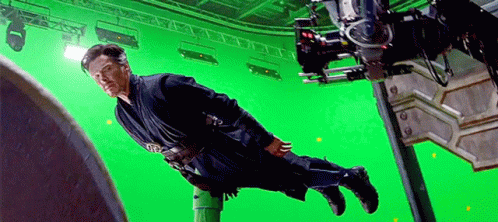
Visual effects also play a crucial role in action sequences and visual spectacles. From epic battles to explosive stunts, VFX allows filmmakers to push the boundaries of what is physically possible.
With the help of computer-generated elements, they can create jaw-dropping visual sequences that captivate audiences and leave them in awe.
Whether it’s superheroes flying through the sky, massive explosions, or breathtaking chase scenes, VFX enhances the excitement and intensity of these moments.
How VFX created?
VFX uses computer animation, composting, 3D modelling and editing. It uses Special effects (SFX), Motion capture , Matte Painting, Animation and much more. Filmmakers now a days uses VFX not only for producing special effects but also integral part of the story.
VFX, or Visual Effects, is created through a combination of artistic vision, technical expertise, and advanced software tools. The process involves several stages, including pre-production planning, production, and post-production. Here’s a general overview of how VFX is created:
1. Pre-production:
– Conceptualization: The VFX team works closely with the director and production team to understand the creative vision and requirements for the project.
– Storyboarding and Pre-visualization: Visual concepts and sequences are created through storyboards or pre-visualization (previs) software, giving a rough idea of how the VFX will integrate into the final shots.
2. Production:
– On-set VFX Supervision: The VFX supervisor oversees the capture of relevant data and ensures that the necessary elements are captured during filming. This may involve using reference markers, motion capture, or green screen setups.
– Data Acquisition: Various data is collected during production, including live-action footage, 3D scans of sets or props, reference photography, and motion capture data.
3. Post-production:
– VFX Shot Breakdown: The VFX team analyzes each shot and determines the specific visual effects required.
– Asset Creation: 3D models, textures, and digital assets are created based on the project’s requirements. This may include creating characters, objects, or environments digitally.
– Tracking and Matchmoving: The live-action footage is analyzed, and tracking markers or points are identified to match the movement of the camera or objects within the scene.
– Compositing: This involves combining various elements, such as live-action footage, CGI, and special effects, to create the final shot. The different layers are blended together seamlessly using compositing software.
– Texturing and Lighting: CGI assets are textured and lit to match the lighting conditions of the scene, ensuring realistic integration with the live-action footage.
– Animation and Simulation: Characters, objects, or effects are animated or simulated to create movement and dynamics within the scene. This can involve character animation, particle effects, fluid simulations, or cloth simulations, among others.
– Rendering: The final composite is rendered, which involves processing and generating the images based on the defined settings and specifications.
– Compositing and Finishing Touches: The rendered images are further refined through color grading, adjustments, and additional effects to enhance the visual quality and overall aesthetic.
– Quality Control: The VFX shots are reviewed, and any necessary revisions or refinements are made to meet the desired creative vision and technical requirements.
4. Integration into the Final Edit:
– The final VFX shots are integrated into the film or project, seamlessly blending with the live-action footage and other visual elements.
Throughout the entire process, the VFX team collaborates closely with the director, cinematographer, and other departments to ensure that the visual effects align with the overall vision of the project.
It’s important to note that the specific techniques and software used may vary depending on the project and the expertise of the VFX team. The process outlined above provides a general overview of how VFX is created, showcasing the intricate blend of artistry and technology that brings visual effects to life on screen.
Special Effects (SFX)
Special effects, often referred to as SFX, are visual or audiovisual illusions used in film, television, theater, and other forms of media to create fantastical or realistic elements that cannot be achieved through practical means. SFX encompass a wide range of techniques and technologies, including physical effects, mechanical effects, optical effects, and digital effects.
Special effects are divided into the categories of mechanical effects and optical effects. Mechanical effects have usually accomplished during the live-action shooting. It includes atmosphere effects like winds, strom, rain and any natural event. It uses Green Background for replacing desirable background.
Optical effects is the technique that helps to create images or frames by the help of photography either by camera or in post production. This can be used when an actor or object revolves around multiple backgrounds.
Here are some of the most common types of special effects used in the industry:
1. Physical Effects: Physical effects involve the use of real-world objects and materials to create visual illusions. This can include the use of props, miniatures, pyrotechnics, animatronics, and practical makeup effects. These effects are often created on set during filming and are captured directly by the camera.
2. Mechanical Effects: Mechanical effects involve the use of mechanical devices to achieve specific visual effects. This can include mechanisms for creating motion, such as animatronics, robotic puppets, or mechanical rigs that simulate flying or floating objects. Mechanical effects are often used in combination with physical effects to enhance realism.
3. Optical Effects: Optical effects are achieved through various optical techniques, such as the manipulation of light and the use of lenses, filters, and reflections. Examples include chroma keying (green screen), matte paintings, rear projection, and split-screen effects. These effects are often created during post-production using specialized equipment and software.
4. Digital Effects: Digital effects, also known as visual effects (VFX), are created using computer-generated imagery (CGI) and digital compositing techniques. This involves the use of powerful software and hardware to generate and manipulate 2D and 3D elements, create virtual environments, simulate natural phenomena, and enhance or alter live-action footage.
5. Pyrotechnics: Pyrotechnics involve the controlled use of explosives, fire, and other pyrotechnic devices to create realistic and dramatic effects. These effects are often used in action sequences, explosions, and scenes requiring fire or smoke. Safety protocols and trained professionals are essential when working with pyrotechnics.
6. Prosthetics and Makeup Effects: Prosthetics and makeup effects involve the use of prosthetic appliances, such as masks, facial prosthetics, and body suits, to transform the appearance of actors and create characters with unique physical characteristics. These effects can range from simple cosmetic enhancements to elaborate creature designs.
7. Sound Effects: While not strictly visual, sound effects play a crucial role in creating immersive and realistic experiences. Sound effects are used to enhance or create audio illusions, such as footsteps, explosions, ambient noises, and other atmospheric sounds. They are often added during post-production to complement the visual effects.
The use of special effects allows filmmakers and media creators to push the boundaries of storytelling, create captivating visuals, and bring audiences into extraordinary worlds.
The advancements in technology, particularly in digital effects, have opened up endless possibilities for creating stunning and immersive visual experiences.
Special effects are a powerful tool in the hands of skilled artists and technicians, helping to transport viewers to new realms and enhance the overall impact of a production.
What is VFX and SFX?
VFX (Visual Effects) and SFX (Special Effects) are two distinct techniques used in the entertainment industry. VFX involves creating or enhancing visual elements using digital tools and techniques.
It integrates computer-generated elements with live-action footage and can achieve realistic or fantastical effects. SFX, on the other hand, relies on practical effects created on set or through physical means such as props, pyrotechnics, and makeup.
It focuses on creating physical illusions and effects. Both VFX and SFX contribute to the visual spectacle in movies, TV shows, and other media, with VFX utilizing digital manipulation and CGI while SFX relies on physical elements and practical effects.
Difference between Animation & VFX
Animation uses 2D & 3D models to transcript the desired story while VFX uses artificial imagenary with live action. Sometimes it uses CGI i.e. Computer Graphics.
VFX Editing
VFX editing is the process between live action and VFX studio that gives visual effects. It bridges the gaps between two different environments. After successful editing we are able to see VFX based movie or TV shows.
VFX editing is a crucial aspect of the post-production process in filmmaking and video production. It involves the integration and manipulation of visual effects elements into the final edited footage.
VFX editing is performed by skilled artists and technicians who work with specialized software and tools to seamlessly blend the live-action footage with computer-generated imagery (CGI) and other visual effects.
Here are the key steps involved in VFX editing:
1. VFX Shot Breakdown: The VFX supervisor or editor analyzes each shot and identifies the specific visual effects required. This involves understanding the creative intent, reviewing the footage, and determining which elements need to be added, modified, or enhanced.
2. Compositing: Compositing is a fundamental part of VFX editing. It involves layering multiple visual elements, such as live-action footage, CGI assets, and other effects, to create the final shot. Compositing software allows artists to blend these elements seamlessly, matching their colors, lighting, and perspective to achieve a cohesive and realistic result.
3. Tracking and Matchmoving: Tracking and matchmoving are techniques used to integrate CGI and other visual effects elements into live-action footage. Tracking involves analyzing the movement of the camera and objects within the scene, while matchmoving focuses on accurately replicating that movement in the virtual 3D space. This ensures that the added visual effects elements align perfectly with the camera movement and perspective.
4. Rotoscoping: Rotoscoping is the process of manually separating foreground elements from the background in a shot. It is often necessary to isolate specific areas or objects in order to apply visual effects to them. Rotoscoping artists use specialized software to create detailed mattes or masks around the elements that require separate treatment.
5. CGI Integration: Computer-generated imagery (CGI) is created by 3D artists using modeling, texturing, and rendering techniques. VFX editing involves integrating CGI assets, such as characters, objects, or environments, into the live-action footage. These assets are carefully positioned, scaled, and lit to match the lighting and perspective of the scene.
6. Visual Effects Enhancement: VFX editing also includes enhancing the visual effects elements to achieve the desired look and impact. This may involve adjusting the color grading, adding particle effects, simulating realistic physics, or creating other stylistic enhancements to elevate the visual quality and storytelling.
7. Fine-tuning and Quality Control: Once the VFX elements are integrated, the VFX editor fine-tunes the shot by adjusting parameters such as timing, transparency, and blending modes to achieve the desired result. They also perform quality control checks to ensure that the visual effects align with the creative vision and technical specifications.
8. Collaboration and Feedback: Throughout the VFX editing process, close collaboration between the VFX editor, VFX supervisor, and other stakeholders is essential. Feedback and revisions are provided to achieve the desired visual effects while maintaining the overall storytelling and aesthetic goals of the project.
VFX editing requires a combination of technical skills, artistic sensibility, and attention to detail. The goal is to seamlessly integrate visual effects elements into the footage, enhancing the storytelling, creating immersive environments, and bringing extraordinary visuals to life on screen.
What is VFX vs CGI?
VFX (Visual Effects) and CGI (Computer-Generated Imagery) are two closely related techniques used in the world of media and entertainment.
VFX involves creating or enhancing visual elements that cannot be achieved practically, integrating computer-generated elements with live-action footage, or manipulating existing footage to achieve desired effects.
It covers a broad range of techniques like compositing, matte paintings, motion tracking, and rotoscoping. On the other hand, CGI primarily focuses on generating computer-generated images and animations, creating virtual environments, characters, and effects.
CGI relies solely on computer-generated assets and simulations and is used in various industries such as movies, video games, and architectural visualization. While VFX incorporates CGI as one of its tools, CGI is the core technology behind creating digital imagery.
Both VFX and CGI require a combination of artistic skills, technical knowledge, and software expertise to create stunning and realistic visuals that captivate audiences.
VFX person or Artist
Person or Artist that perform the VFX editing called VFX person or Artist. Live action team i.e. Film studios can have their side’s VFX person that ensures everything that is desired from visual effects can practically possible to develop.
A VFX (Visual Effects) artist is a creative professional who specializes in creating and manipulating visual effects for films, TV shows, video games, and other forms of media.
They work closely with directors, producers, and other members of the production team to bring imagination and storytelling to life through stunning visual effects.
VFX artists utilize various software tools and techniques to design, create, and integrate visual effects seamlessly into live-action footage or computer-generated imagery (CGI).
They possess a strong understanding of concepts such as compositing, animation, motion tracking, matte painting, and 3D modeling.
The role of a VFX artist includes tasks such as:
1. Visual Effects Design: Collaborating with the director and production team to conceptualize and design visual effects that enhance the narrative and artistic vision of the project.
2. Asset Creation: Creating or manipulating 3D models, textures, and animations to build digital assets required for the visual effects sequences.
3. Compositing: Seamlessly integrating various visual elements, such as CGI, live-action footage, matte paintings, and effects layers, to create a cohesive and realistic final image.
4. Special Effects: Creating simulations and particle effects for elements such as fire, smoke, water, explosions, and other dynamic visual elements.
5. Tracking and Matchmoving: Using advanced tracking techniques to accurately match the movement and perspective of live-action footage with CGI or other visual elements.
6. Rotoscoping: Extracting subjects or objects from the background by hand, frame by frame, to enable precise compositing and integration of visual effects.
7. Quality Control: Ensuring the technical and artistic integrity of the visual effects sequences through rigorous testing, troubleshooting, and refinement.
VFX artists possess a strong artistic eye, technical skills, and a deep understanding of the principles of light, color, and composition.
They continuously stay updated with the latest advancements in VFX technology and tools to deliver high-quality and realistic visual effects that enhance the overall visual storytelling experience.
In summary, VFX artists play a crucial role in the creation of visual effects, bringing imagination to reality and elevating the visual aesthetics of films and other media projects through their creative and technical expertise.
On the other side VFX studio team can have the same person that ensures everything that film studios provide are successfully build with visual effects.
VFX Softwares
There are several software tools commonly used in the field of VFX (Visual Effects). Some of the popular ones include:
1. Adobe After Effects: A versatile software for creating motion graphics, compositing, and visual effects.
2. Autodesk Maya: A 3D modeling, animation, and rendering software widely used for VFX in films and games.
3. SideFX Houdini: A powerful procedural 3D software known for its advanced VFX capabilities.
4. Foundry Nuke: A node-based compositing software used for seamless integration of VFX elements.
5. Blackmagic Fusion: A compositing and motion graphics software with advanced VFX tools.
6. The Foundry Mari: A high-resolution 3D painting software used for texturing and asset creation in VFX.
7. Cinema 4D: A 3D modeling, animation, and rendering software that includes VFX features.
8. Substance Designer: A node-based texturing software commonly used in VFX and gaming.
9. PFTrack: A match-moving and camera tracking software for VFX and 3D camera tracking.
10. ZBrush: A digital sculpting and painting software often used for creating detailed 3D models in VFX.
These software tools offer a wide range of features and capabilities to VFX artists and professionals, allowing them to create stunning visual effects and seamlessly integrate them into live-action footage.
Motion capture
Motion capture is the technique to analyse the motion of objects and it’s recording. In film and gaming industries this motion capture helps to train 2D & 3D models to move exactly like human actors.
Motion capture is a technique widely used in VFX (Visual Effects) to capture the movement of actors or objects and transfer it to digital characters or elements.
It involves recording the motion using specialized sensors or cameras and then using that data to drive the animation of virtual characters or objects.
The process of motion capture typically involves the following steps:
- Setup: Actors or objects wear markers or sensors on their bodies, which are tracked by cameras or sensors placed around the capture area. These markers or sensors capture the movement data.
- Recording: Actors perform the desired actions or movements while being recorded by the motion capture system. The system captures the position, orientation, and sometimes even the deformation of the markers in real-time.
- Data Processing: The captured data is processed and transformed into a usable format. This involves cleaning up the data, removing noise or artifacts, and mapping it to a virtual character or object.
- Animation Integration: The processed motion capture data is applied to the digital character or object within a 3D software.This allows the character to move and behave in a realistic and natural manner based on the captured movements.
Motion capture offers several benefits in VFX production. It allows for highly realistic and accurate character animation, as the movements are derived directly from real-life performances.
It also saves time and effort that would otherwise be required to manually animate complex movements.
Motion capture is widely used in films, video games, and other forms of media to create lifelike and dynamic characters or creatures that seamlessly blend with the live-action footage or virtual environments.
Matte Painting
Matte painting is the representation of set and location in a way that produce seamless experience for viewers. It can help to create wonderful scenary and exact imagniation of the story.
Matte painting is a technique used in VFX (Visual Effects) to create realistic or fantastical backgrounds and environments for film, television, and other media.
It involves the combination of hand-painted or digitally created elements with live-action footage to extend or enhance the visual scope of a scene.
In the past, matte paintings were created on glass panels, where artists would paint detailed backgrounds or landscapes.
These paintings were then combined with live-action footage by photographing the scene through the glass, creating the illusion of a seamless environment.
With the advent of digital technology, matte painting has evolved and become predominantly digital. Artists now use software such as Adobe Photoshop, Autodesk Maya, or The Foundry Nuke to create the paintings.
They blend together various elements like photographs, 3D models, textures, and hand-painted details to achieve the desired look.
Matte paintings are often used:
1. Extend or enhance real-world environments: When shooting on location is not feasible or too expensive, matte paintings can be used to extend the set or create a larger and more elaborate environment.
2. Create imaginary or otherworldly settings: Matte paintings allow artists to bring to life stunning landscapes, futuristic cityscapes, or magical realms that don’t exist in reality.
3. Set the mood and atmosphere: By manipulating lighting, color, and composition, matte paintings can establish a specific mood or tone for a scene, enhancing the storytelling and visual impact.
4. Hide or remove unwanted elements: Matte paintings can be used to hide or remove unwanted objects or structures from a shot, providing a clean and seamless visual.
The integration of matte paintings with live-action footage is achieved through techniques such as layering, masking, and compositing. The final result is a seamless blend of real-world elements and digital artwork, creating breathtaking and immersive visual environments that enhance the storytelling and captivate the audience.
Green screen in VFX
Green screen, also known as chroma keying, is a technique widely used in VFX (Visual Effects) to replace or manipulate the background of a scene.
It involves shooting the subject or actors in front of a green screen backdrop, which is then replaced with a different background during the post-production process.
The green color is chosen for the screen because it is not commonly found in the human skin tone or clothing, making it easier to distinguish and separate from the foreground subject.
The green screen serves as a solid color backdrop that can be easily removed or replaced using specialized software.
The process of using a green screen in VFX typically involves the following steps:
1. Set Preparation: The green screen backdrop is set up behind the actors or subject during the filming process.
It should be evenly lit to ensure a consistent color and eliminate shadows or wrinkles.
2. Filming: The actors or subjects perform their scenes in front of the green screen, while the camera captures their actions.
It is crucial to ensure proper lighting and avoid any spill or reflection of green onto the subject.
3. Post-production: After the filming is complete, the footage is imported into VFX software, such as Adobe After Effects or The Foundry Nuke.
The software uses chroma keying algorithms to identify and remove the green color from the footage, leaving a transparent background.
4. Background Replacement: Once the green screen is removed, a new background or environment can be inserted behind the subject.
This can be a digital image, a pre-recorded video, or even a 3D-rendered environment. The background is composed of the foreground footage to create the final scene.
Green screen is widely used in various productions, including movies, TV shows, commercials, and music videos.
It allows filmmakers to place actors in different locations or create fantastical environments that would be impractical or impossible to achieve in real-life settings.
The flexibility of green screen technology enables creative storytelling and visual effects that transport audiences to new and exciting worlds.
3D Modelling in VFX
3D modeling is a crucial component of visual effects (VFX) as it allows artists to create digital objects, characters, and environments that seamlessly blend with live-action footage or other elements.
In VFX, 3D modeling involves using specialized software to build three-dimensional models with detailed geometry, textures, and materials.
The process typically begins with a concept or reference images that guide the creation of the model. Artists use modeling tools to construct the shape and structure of the object or character, paying attention to proportions, details, and realism.
They can manipulate vertices, edges, and faces to refine the model’s form, ensuring accuracy and believability.
Texturing is another essential aspect of 3D modeling. Artists apply realistic textures and materials to the model’s surface, giving it the appearance of various materials like metal, wood, or fabric.
This process involves the creation or application of textures and the use of specialized software to map the textures onto the model accurately.
Once the model is complete, it can be further enhanced through techniques like rigging and animation. Rigging involves creating a digital skeleton or structure within the model, allowing it to be animated realistically.
Animators can then bring the model to life by manipulating its movement, expressions, and interactions.
In VFX, 3D modeling is used to create a wide range of objects, characters, and environments, including realistic creatures, futuristic vehicles, architectural structures, expansive landscapes, and more.
These digital models are seamlessly integrated into live-action footage or combined with other visual effects techniques to create captivating and immersive visual experiences.
Overall, 3D modeling is an integral part of the VFX pipeline, enabling artists to bring imagination to reality and push the boundaries of visual storytelling.
With advanced tools and techniques, 3D modeling in VFX continues to evolve, resulting in stunning and visually impactful cinematic experiences.
VFX Meaning : Every thing you want to know about- Verdict
VFX is an amazing technique to product film and TV sequences. It is also helpful in the Gaming industry. Visual effects have immersive experience for users and It’s kind of a point of attraction too.
Overall, VFX has transformed the movie industry by providing filmmakers with the tools and techniques to create visually stunning and immersive experiences.
It has become an essential component of storytelling, enabling filmmakers to push the boundaries of imagination and deliver captivating visual narratives.
From creating extraordinary worlds to bringing imaginary creatures to life, VFX continues to enhance the cinematic experience and captivate audiences around the globe.
So How this VFX cover story looks to you. Comments us below and follow The Smart Innovator.
Frequently Asked Questions
VFX stands for Visual effects.
Yes! with daily huge video consumption, creators have challenge to produce quality immersive content.
No, you have to learn VFX softwares and concepts.
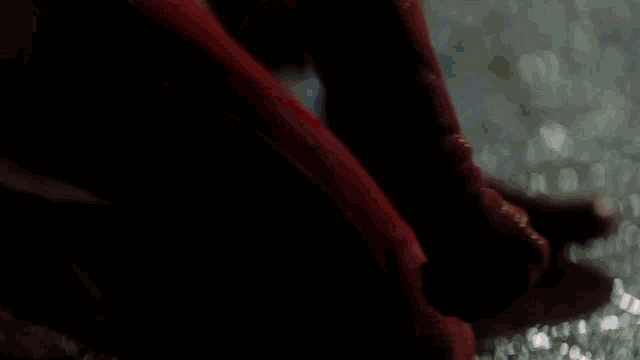
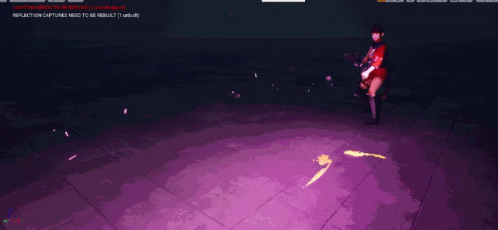
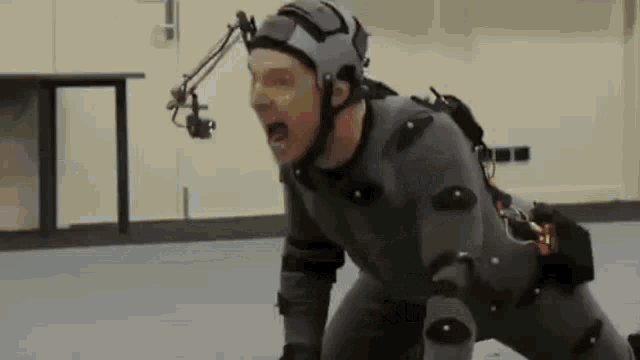
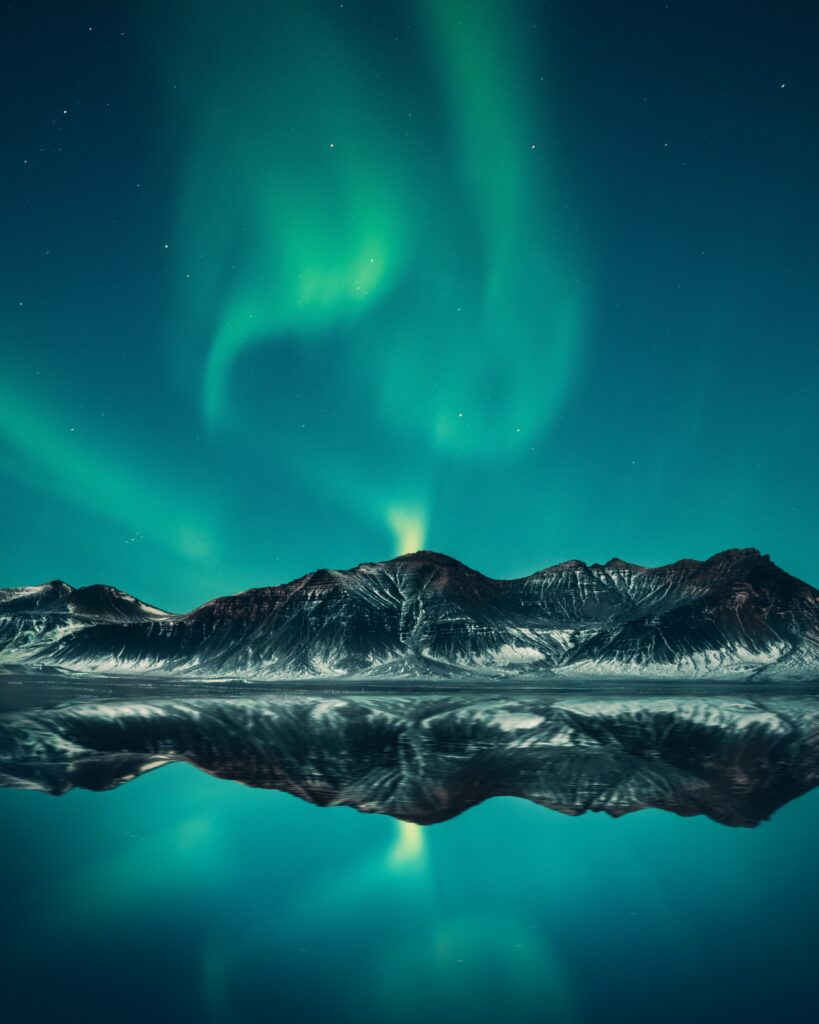








0 Comments